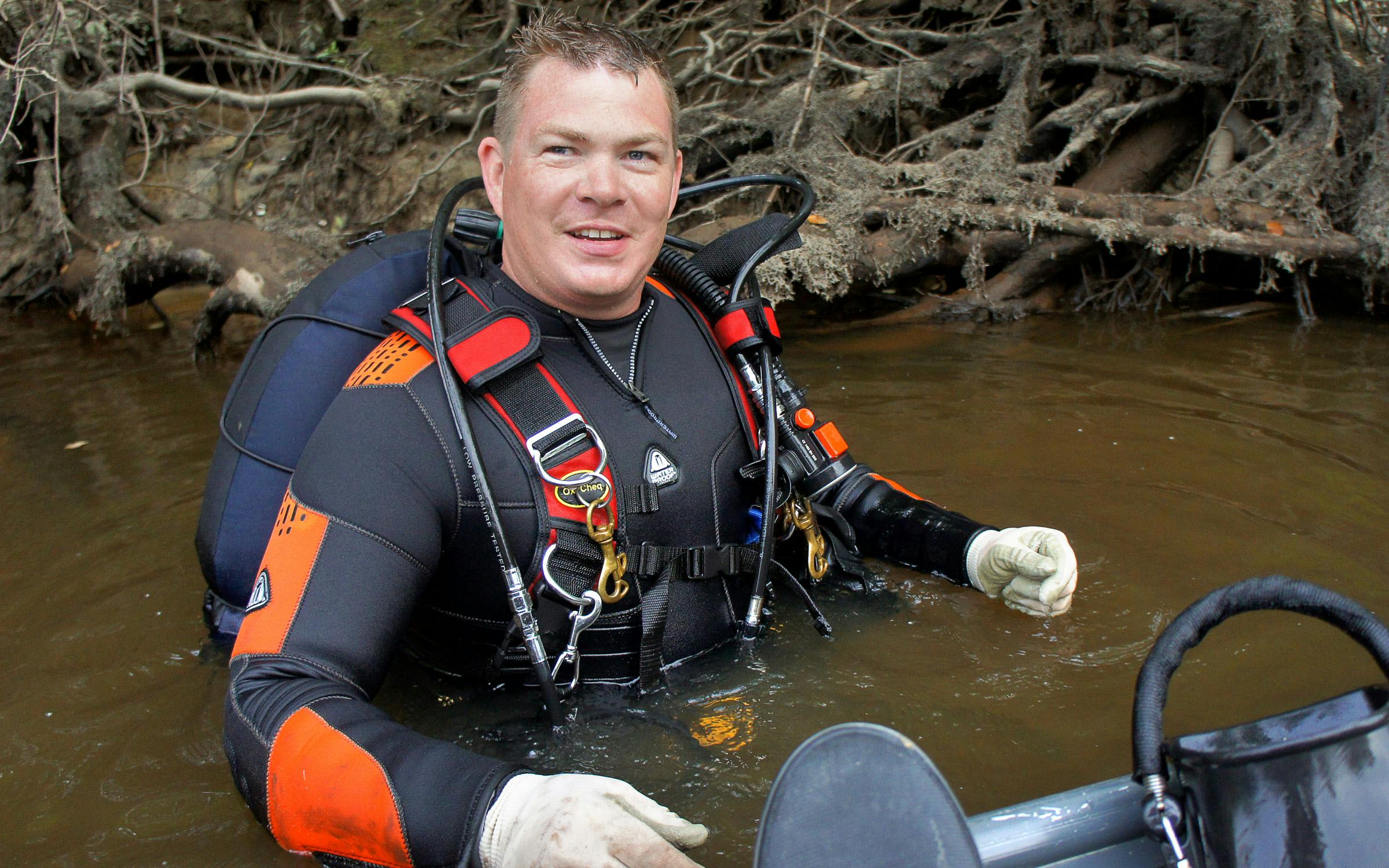WHO: Jason Osborne, of Odessa, who scuba dives across the country looking for ancient marine life.
WHAT: A newly discovered genus and species of parasitic marine isopod, known as Calverteca osbornei, that lived 18 million years ago.
WHY IT’S SO GREAT: It will shock no one that few explorers volunteer to scuba dive in mucky water. In near darkness, divers may suddenly encounter alligators, catfish with mouths as wide as your shoulders, or water snakes as big around as a forearm. They may find they’re surrounded by a large fishing net or a fallen tree. They may try to rise to the surface and realize (whoops) they’re in a cave. “I’ve been bumped by a bull shark in a river system in Virginia,” said Jason Osborne, a 53-year-old Odessan who explores high-risk marine environments. “It slammed in the side of me and freaked me out.”
For all the trouble, however, the lack of scouting competition does have its benefits. It did for Osborne one day in the spring of 2016, when he was aiming his flashlight at the floor of the Pamunkey River in eastern Virginia. “Your nose is basically right in the river bottom, and you learn to acclimate your eyes to things that aren’t normal,” he said. What wasn’t normal on that spring day was a three-inch-long fecal fossil, what researchers call a coprolite, adorned with a little three-quarter-inch-long indentation of a critter. “It had an inclusion of a bug or crustacean. At that time, I wasn’t really sure what it was,” he said. He was intrigued and brought the coprolite to the surface.
Having previously discovered two new seal species and a new genus and species of whale, he knew the drill for what came next. He passed the fossil along to researchers at the Calvert Marine Museum, in Maryland, and Kent State University. Then he waited for the results. When he heard back, the paleontologists declared it was an isopod—kind of like a roly-poly—that had attached itself inside the mouth of some poor salmon-size fish 18 million years ago before the fish finally chomped on it, dislodged it, and passed it through its tract, undigested. (“This fossil isopod seems to have gotten what it deserved,” the Calvert Marine Museum press release noted.)
“It started out as, ‘Yeah, this looks like a new species,’ ” Osborne said. “And then, after further research, it’s now a new genus and species, which is extremely rare to find. And so that means it’s now the holotype. This is the studied sample of that particular isopod.”
Osborne said he wouldn’t put his reaction up there with winning the Nobel Prize, although he hesitated to say that definitively: “It’s like the Holy Grail of discovery, right? When you find something that’s brand-new?” It certainly helped that his surname was included in the new isopod’s name—Calverteca osbornei—when the research was finally done, and the paper was published in late October. “I think it’s interesting to leave a legacy of discovery behind because it’ll always be there. Right? When I’m long gone, it’s still going to be there. It’s still going to be researched and studied.”
In the grand scheme of things—wars, fires, hurricanes, flooding, drought—you might wonder why a three-quarter-inch fossil discovery is worth celebrating. For Osborne, of course, every tiny bit of information is important to piecing together the puzzle that is the history of the earth, but there’s more to it. “I feel like a lot of times people don’t slow down and just observe,” he said. “I mean, they’re finding new living insects all the time because people are getting down on their hands and knees, looking at things.”
Osborne thought for a minute. Texas offered plentiful opportunities for a great observer. He hears stories of ranchers finding bones as they’re walking down their fields. The Brazos River, rich in Pleistocene material, is just waiting for someone to find the remains of a woolly mammoth. (Osborne promotes participatory science at his workplace, a software company called syGlass.) “There’s nothing like being in a blackwater swamp, and you come across a whale skeleton and you’re just running your hand along the inside of the rib cage, and you’re the first human to see and touch this thing since it died millions of years ago,” he said. “That itself is just fascinating. You just put yourself in a place that no one has been, no human has been, and that’s a rush in itself.”
“It’s not like I really want to dive with alligators or sharks and blackwater,” Osborne said. “It’s just, I know that’s a risk I have to take if I’m going to get the outcome that I want.”

